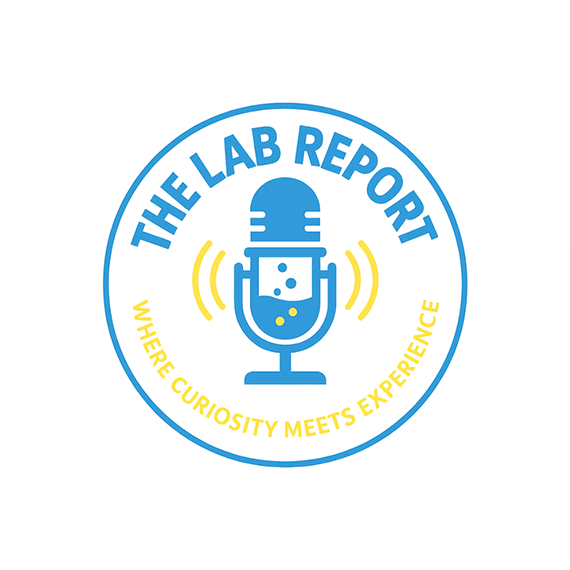Under the sponsorship of Dimer UVC Innovations, a UV light disinfection company, I recently had a unique opportunity to study the relationship between the efficacy of a constant dose of UV light on bacteria and the distance the light has to travel to reach the bacteria, right in a classroom at the TGR Learning Lab. I was full of wonder, and that wonder would stay with me as we carried out the research. A few months later, I became a published author of scientific literature.
I certainly felt like a scientist once I had put on all of the personal protective equipment (PPE) provided to me by Dr. Arthur Kreitenberg, or Dr. K, our principal investigator. It included standard items like gloves and safety glasses, but we also had things like fully-enclosing zip-up jumpsuits for splash protection and bacteria-to-skin contact. The experience was far different from what I had initially expected it to be.

Instead our research often meant simply observing and validating that things were being counted correctly. However, this was key to the research as a single miscount might have lead to entirely invalid results, and Andrea, another student researcher affiliated with the TGR Foundation, was most keen at this, saving us an abundance of time having to repeat miscounted tasks. We also sometimes didn’t do anything at all, waiting long periods of time for one process to finish before we could do the next. Sigal, another student researcher and medical student, confirmed this, stating that a large part of research is often just patiently waiting.
Secondly, we actually had to repeat the entire experiment because of inconsistent results that seemed to venture beyond the realm of reason. We attributed it to a seemingly inconspicuous fault in the engineering of our voltage timer, from which we required millisecond-level accuracy. We fixed the error and succeeded on the second try, and from that, I truly understood why failures and re-runs should be an expected part of any research process. We had a solid lab protocol, a hardened principal investigator with years and years of experience in the healthcare industry, and lots of sleek and expensive-looking machinery and equipment for the research process. Even then, the wrench in the cog turned out to be in one of that equipment, and the only way to have known that is to have run through the experiment since the inconsistencies only showed up through multiple trials.

Seeing with my own eyes what small piles (Colony forming units or CFU’s) of Staphylococcus bacteria looked like on a Petri dish, without actually using a microscope, was awesome. Furthermore, the power of UV light on bacteria was made clear by just looking at the treated and untreated Petri dishes. Some dishes which were treated were fully clear or only had a few CFU’s, while some untreated dishes were almost fully covered by CFU’s. What was more ambiguous was whether or not distance actually played a part in how effective a constant dose of UV light was against the bacteria in terms of bacteria elimination. With the help of statistical methods, however, we concluded that there indeed is no significant relationship between the two.
When the research concluded and I received the news from Dr. K that we had published, it felt good knowing that I was able to help put that work out there, having committed myself to it from beginning to end. That feeling has persisted as I have continued forward in medical research while pursuing a bachelor’s degree in computer science at the University of California, Santa Barbara. Being able to invoke my experience and make the connections between my research and computer science has given me more confidence in my ability to learn new concepts and ideas and different ways to apply them.

For example, my research at UC Santa Barbara focuses on the prevalence of ticks as disease vectors and the magnitude of their impact on mammals and lizards in California. Recognizing how similar the requirements for precision are for DNA extraction and writing lines of code has made me more focused and motivated, knowing that the mindset carries over in both disciplines. Beyond the more obvious analogs of debugging for days on end as a program writer and the wait times and delays in many research labs, which has also allowed me to better appreciate the power of parallel processing, I have also found stark resemblances in the principles of lab research and computer security. In the matter of a security breach, security analysts are told that it is not a matter of if, it is a matter of when, and with my experience in the Dimer lab and my current lab, the same tenet seems to apply to experimental failure. No matter how much one mitigates the associated risk with a process, there is always residual risk, so being prepared for failure is something that has been reinforced by both my lab experience and my computer security knowledge.
The most beneficial element of my experiences as a researcher and the connections between my seemingly unrelated interests is having been able to develop an interdisciplinary mindset that is agnostic to any challenge that I undertake. I always assumed that it was one field or the other for me, and that I would have to definitively choose between healthcare and computer science, which have been my main interests so far. Now, I have found ways to integrate the two in my educational journey, and as I have learned more about fields like environmental science and business, my matrix of interests has continued to expand as I discover the ubiquity of lessons learned across all of these disciplines. Looking ahead, it is my hope to synthesize these domains of knowledge and my research experiences in a meaningful way to help serve hundreds of thousands, or even millions, of people, whether directly or indirectly.





